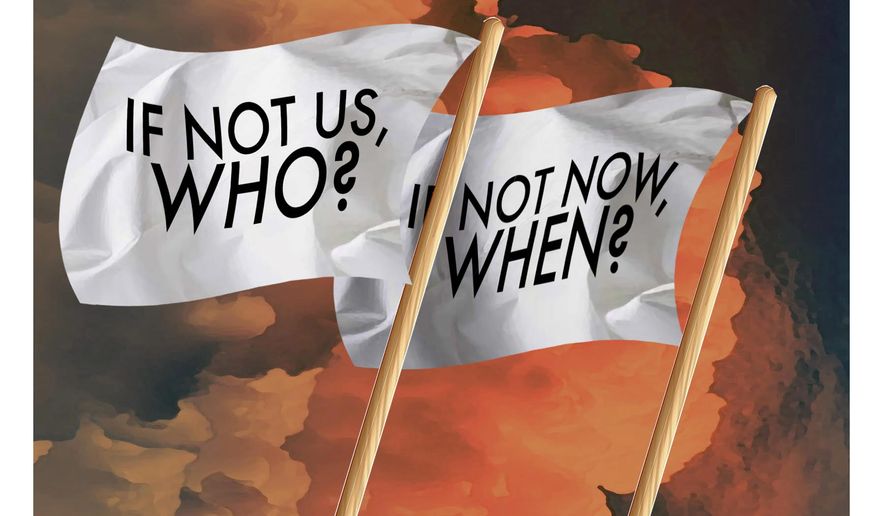OPINION:
President Ronald Reagan signed the largest tax cut in American history 40 years ago. He signed it at his beloved Rancho del Cielo on August 13, 1981.
Before the Economic Recovery Tax Act of 1981, the highest marginal tax rate was 70 percent. Years ago, I talked to 5th-grade students at Ronald Reagan Elementary School in New Berlin, Wisconsin. They asked me what I liked about President Reagan, and I listed off several things, including feeling proud to be an American again after years of malaise.
When it came time to explain his tax cuts, I asked the students to imagine going to their grandparents to rake some leaves. In the example, they would each receive $10 for their labor, but when they returned home, their parents would take seven of the ten dollars as a tax for living in their house.
One of the students immediately said, “that’s not fair,” while another asked, “why would you even work if they take that much money away from you?” Amazingly, these fifth graders understood economics and fairness better than many of the politicians in Washington today.
For years, U.S. Representative Jack Kemp and U.S. Senator William Roth had pushed the tax cut legislation. They felt that putting more money into the hands of the American people would help boost the economy after the challenges of the late 1970s. When President Reagan took office, he made the tax cut his top priority.
Even though his party did not hold the majority in the U.S. House of Representatives, President Reagan convinced conservative Democrats like then-Congressman Phil Gramm to support the tax cut bill. It was a huge victory for the President and the American people.
Under the plan, taxes were cut across the board - with the top marginal tax rate falling from 70 percent to 50 percent and the lowest marital tax rate going from 14 percent to 11 percent. The new tax rates were also indexed for inflation to prevent bracket creep in the future.
Dr. Arthur Laffer, a renowned economist and advisor to President Reagan during his 1980 campaign, helped inspire the tax cut through his supply-side theories of economics. He is famous for the “Laffer Curve” - a theory to show the relationship between tax rates and the amount of tax revenue collected by a government.
If tax rates are too high, it discourages things like work and investment (similar to the assumptions made by the fifth graders I spoke with at Reagan Elementary School). This would actually reduce total tax revenue even if rates went up—according to the Laffer Curve theory. In contrast, reducing tax rates—to a reasonable level—would both stimulate economic growth and increase overall tax revenue.
I have a different way of explaining this theory. With all due respect to my friend Dr. Laffer, I call it the Kohl’s Curve.
Years ago, I learned from my wife Tonette to only purchase items at Kohl’s Department Stores marked on sale. In my case, that typically means sports-related clothing near the cashier stands.
As we prepare to check out, I walk through the Packer, Brewers, and Bucks merchandise near the front. I have learned to spot things that are marked down from the original retail price. Then, Tonette typically has a coupon for 10, 15, or even 30 percent off Kohl’s purchases. She usually also pulls some Kohl’s cash out of her purse. By the time we are done, it feels like they’re paying us to buy the merchandise.
So how does a retailer like Kohl’s make a profit? Volume.
Kohl’s and many other retailers make their profits off of volume. Sure, they could sell that shirt for the full retail price, and a few customers might be willing to pay for it. Or, they can lower the price and dramatically increase the number of people willing and able to purchase the item.
The same goes for taxes. Governments can charge high rates, and some taxpayers might be willing to pay the high amount. Or, they can lower the tax rates and encourage more people to work and invest in things that employ people and grow the economy. That’s my Kohl’s Curve theory.
On Friday, August 13, 2021, I am sharing this theory with students at the Reagan Ranch. Dr. Laffer and Jimmy Kemp, the son of supply-side enthusiast Representative Kemp, are joining me with students and supporters at the Reagan Ranch, where our 40th President signed the tax cut law.
President Reagan’s ranch is now owned and operated by Young America’s Foundation (where I now serve as President). We host conferences, seminars, and tours at Rancho del Cielo. The 40th anniversary of President Reagan signing the tax cut law at his ranch is an extraordinary opportunity to celebrate his bold leadership and share his vision for our nation.
President Reagan believed in the American people. He felt that giving back more of their hard-earned money would result in true economic growth. According to the Federal Bureau of Labor Statistics, there were about 90.5 million jobs in January of 1982, the first year the tax cuts were in effect. Five years later, the country gained roughly 10.5 million jobs.
Between 1982 and the end of the decade, the economy (real gross domestic product or GDP) increased 3.6 percent on average - according to the Bureau of Economic Analysis. Similarly, personal income grew 28 percent during the same period.
The Reagan Revolution worked. It is a model for us even today.
• Scott Walker was the 45th governor of Wisconsin. You can contact him at swalker@washingtontimes.com or follow him @ScottWalker.




Please read our comment policy before commenting.